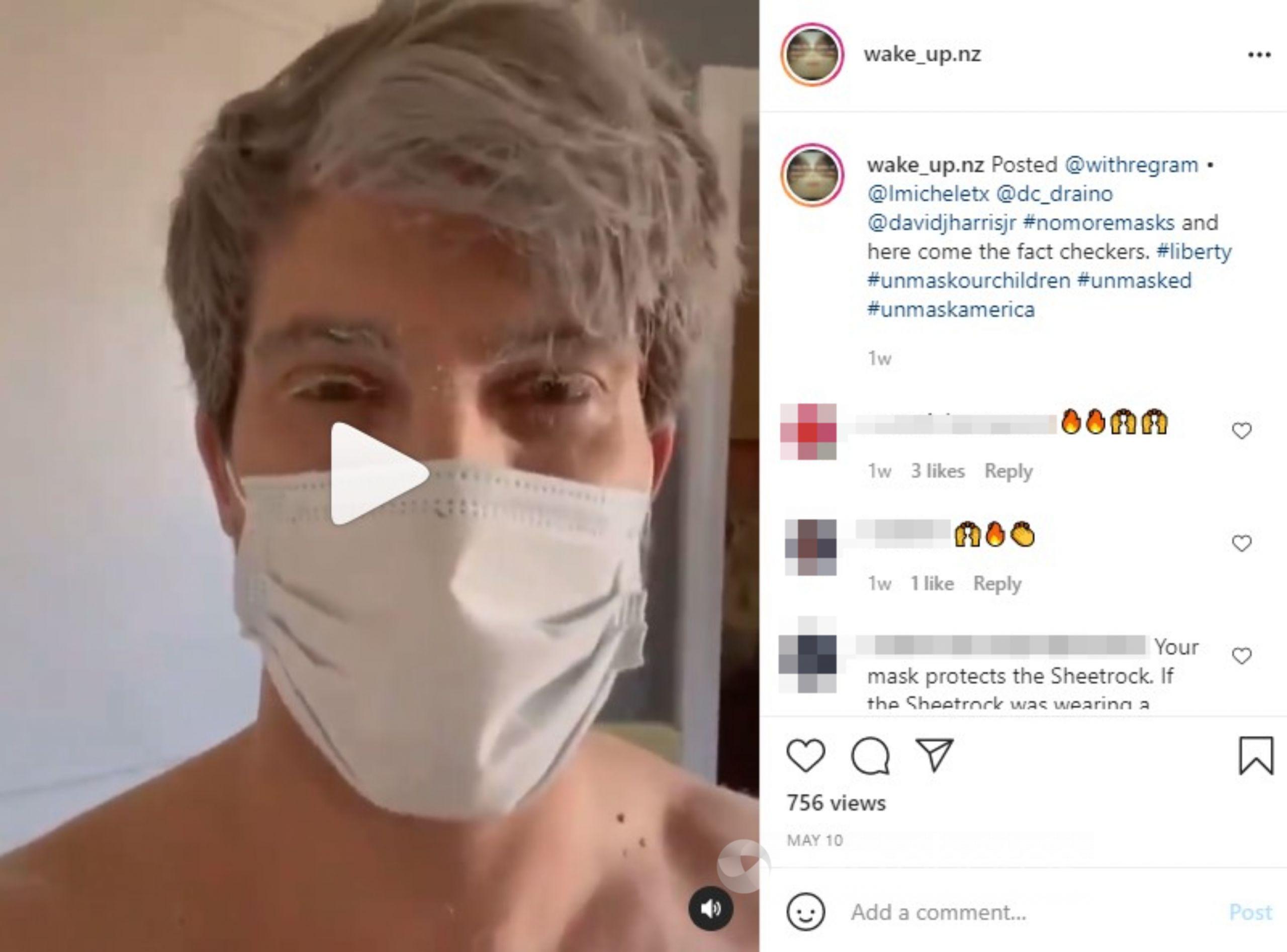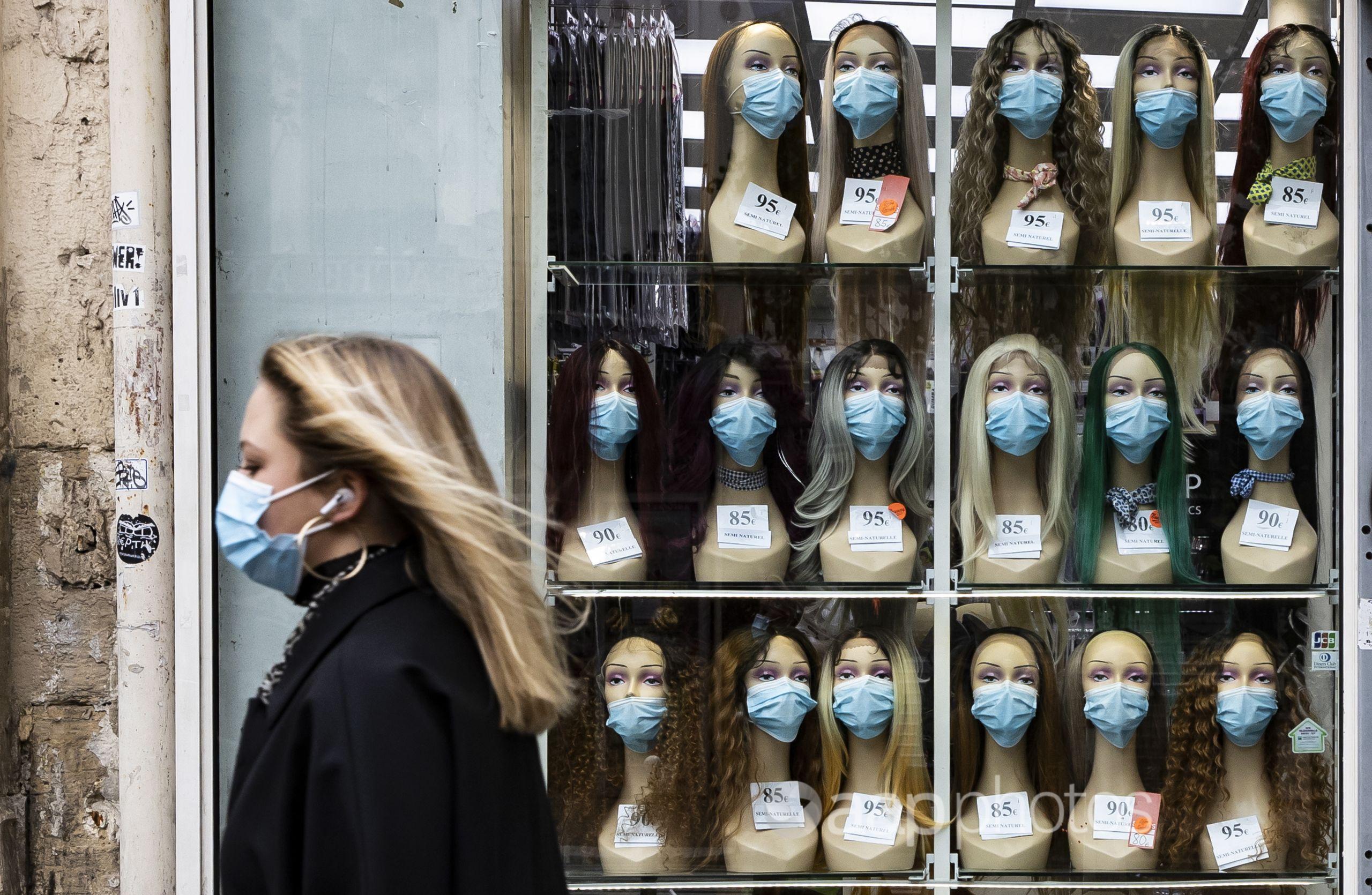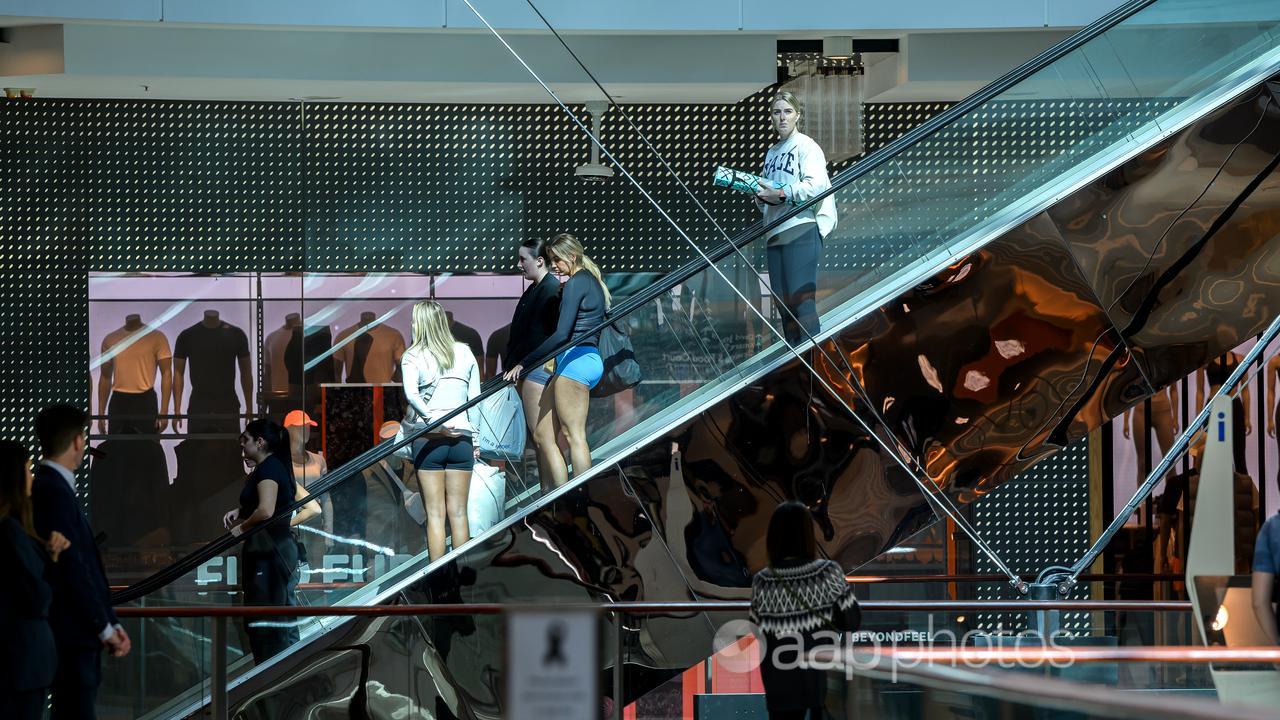The Statement
An Instagram video shows a man who claims he is conducting a “science experiment” by wearing a face mask while sanding. He later uses the apparent results to question masks’ effectiveness in keeping out viruses.
The May 11 post to a New Zealand-themed account shows the man wearing a disposable surgical mask – non-coloured side out – for what he says was sanding “Sheetrock”, also known as drywall or plasterboard. The man cannot be seen sanding in the video, however his face is covered in fine dust.
The man says he wore the mask because he didn’t want to breathe in the dust. He then removes the mask to show an outline of pale dust around his nostrils beneath the mask.
“My question is, if this is Sheetrock dust, I thought it was supposed to protect me from a virus?” he asks. Similar claims have also been circulated in a widely shared meme.

The Analysis
It’s true plasterboard dust can gather behind a disposable face mask – but that’s not a valid indication as to whether a mask can protect against COVID-19, experts say.
When worn properly, surgical masks curb transmission by blocking the projection of droplets that contain the coronavirus.
Respiratory droplets are one means by which SARS-CoV-2, which causes COVID-19, is passed from one person to another. The coronavirus can also be spread via smaller aerosols and contaminated surfaces, according to the World Health Organization (WHO).
In the first months of the pandemic, authorities’ guidance on mask use focused primarily on those working in health care facilities and home care, while advice to the community was less clear.
The WHO’s interim guidance on January 29, 2020 expressed concern that community use of medical masks could cause unnecessary costs and a false sense of security, although it also noted masks were one of the preventative measures that could limit the spread of respiratory diseases like the coronavirus.
The guidance was updated on June 5, 2020 to say the general public should wear non-medical masks in areas with widespread COVID-19 transmission and where social distancing was difficult.
The US Centers for Disease Control (CDC) began recommending the wearing of masks in April 2020. Its current guidance emphasises that masks help prevent a person’s respiratory droplets from reaching others.
Both health agencies emphasise that masks should be used as part of a comprehensive suite of measures to suppress transmission of the virus.
How much a mask can protect a person from the virus, depends on the fabric and how the mask is worn, experts say.
Hassan Vally, an epidemiologist at La Trobe University in Melbourne, told AAP FactCheck the video does not contradict the usefulness of masks for preventing person-to-person transmission of COVID-19.
“One always has to be careful in drawing conclusions based on a scenario that is obviously very different to the real-life transmission of virus from airborne droplets,” he said in an email.
“Plasterboard dust has very different properties to airborne droplets containing virus. Having said this, what has been presented in the video doesn’t contradict the public health advice.”
Dr Vally said the evidence is “wearing a surgical mask has a greater effect on protecting others by physically blocking the projecting of droplets containing virus from the nose and mouth of an infected person”.
“The situation represented in the video doesn’t really replicate these scenarios,” he added.
Medical epidemiologist Abrar Chughtai, a lecturer in the School of Population at UNSW Sydney, told AAP FactCheck that masks are used to filter respiratory droplets, not viruses as claimed in the video.
“We know that viruses are of small size, but they are inside the droplets and masks efficiently block those large droplets,” he said in an email.
Dr Chughtai was among a group of researchers from UNSW who used an LED lighting system and a high-speed camera to film people coughing and sneezing while wearing different types of masks.
The video shows a three-ply surgical mask is significantly better than a one-layered cloth mask at reducing the spread of droplets, although all masks limited the spread to some degree when compared to a person with no mask. The results were published by respiratory medicine journal Thorax, a companion to BMJ Open Respiratory Research.
Dr Chughtai also noted that in the Instagram video the mask is being worn incorrectly.
“The blue, water-resistant layer of the mask should be outside,” he said.
Research published in June 2020 by US medical journal Health Affairs found that mandating the use of face masks in public was associated with a decline in the daily COVID-19 growth rate by up to two percentage points over 21 or more days.
Separate US research, published in May 2021 by the Annals of Epidemiology, identified that rapid increases in COVID-19 cases were much less likely in counties that had statewide mask mandates in place following the easing of restrictions to prevent virus spread.
AAP FactCheck has previously addressed the effectiveness of face masks in stopping COVID-19 transmission, debunked claims that the WHO advised healthy people to stop wearing masks and countered misinformation about how to wear a surgical mask properly.
The Verdict
The video does not provide evidence that masks are ineffective at providing protection from respiratory viruses like SARS-CoV-2. Experts say dust has different properties to airborne droplets containing the virus. Research has shown that mask-wearing can reduce the spread of these droplets and the virus that causes COVID-19.
Missing Context – Content that may mislead without additional context.
* AAP FactCheck is an accredited member of the International Fact-Checking Network. To keep up with our latest fact checks, follow us on Facebook and Twitter.
All information, text and images included on the AAP Websites is for personal use only and may not be re-written, copied, re-sold or re-distributed, framed, linked, shared onto social media or otherwise used whether for compensation of any kind or not, unless you have the prior written permission of AAP. For more information, please refer to our standard terms and conditions.


















